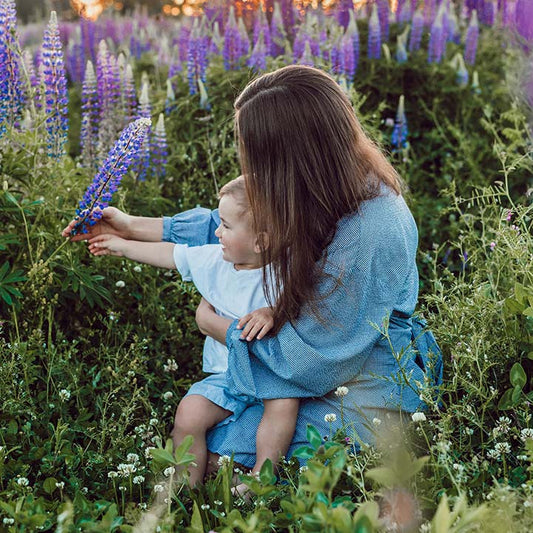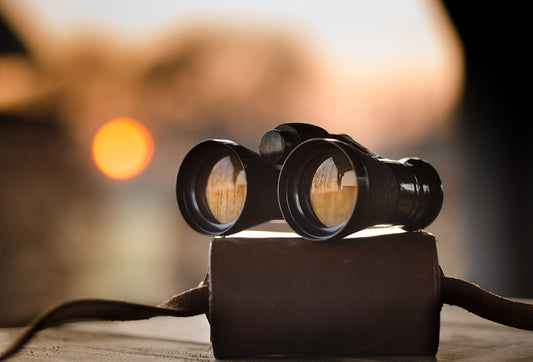“Eventually, my eyes were opened, and I really understood nature. I learned to love at the same time.”
~ Claude Monet
If you’re like most, you may enjoy the sounds of early morning bird songs in the summer breeze but hardly notice the details of their world as it collides with yours. For the majority of my life, I too was content to appreciate this vast world of mystery and charm in my peripheral vision, never taking the initiative to watch and learn.
Now I am convinced that everybody should start bird watching. I want to share my story, the things I have learned along the way, and just how easy it is to begin!

Did you ever dream of flying? You know those dreams that you wake up from with a start, wishing with every fiber of your being that the dream continues for one more moment of awareness?
My childhood dreams of flying were filled with the ecstasy and joy of defying gravity, even for a moment. There is just something magical about flying!
This affinity for the idea of soaring through the air gives us an appreciation for these tiny creatures that live without a tether to the ground.
But how do we go from simple appreciation of these feathered friends to bird watching?
Stillness.
Time.
Observation can only come when we pause.
And for me, it all began with a group of chickadees.

“Chick-a-dee-dee-dee” “Chick-a-dee-dee-dee”
Their songs light up the crisp, cool summer morning. On our first staycation in our new home, the chance to sleep in until our son wakes up is very welcome, and the morning hours are quiet, still, and delightful.
For a few days, I took the time. Because what else is a vacation for but trying something new and refreshing?
Tiny chickadees flit and flutter through the trees beyond our backyard fence, and their colors are striking.
I’m hooked.
As I quickly grab the camera, I have no idea how much these moments will change my life. A whole new world opens up to me that had been there all along. I just never took the time to notice.
Here are the 5 biggest treasures I know you can gain from watching the birds.
1. Stillness

“To see birds, it is necessary to become part of the silence.”
~ Robert Lynd
It is impossible to notice the birds without stillness and silence.
There is a world just above us with songs, aerial acrobatics, and dashing colors and patterns. We miss seeing the birds and observing their world because we move too fast.
“Nature does not hurry, yet everything is accomplished.”
~ Lao Tzu
In our busy, high tech, digital lives, stillness can be rare. We fill up every spare moment and wear the title “busy” as a badge of honor, constantly comparing ourselves to those that do it better, faster or more.
The practice of watching the birds can bring back the stillness we have lost. And it is in the times of pause that we can blossom and grow as human beings. Bird music especially, is positively rejuvenating!
Even a chance sighting while getting the mail or bringing the trash down the driveway can brighten my day with joy and give me a connection with the world of the birds.
2. Observation Skills

“The bluebird carries the sky on his back”
~ Henry David Thoreau
We all value observation skills. They help us survive and thrive.
When we notice our surroundings, we can plan and respond accordingly. As with any skill, sharp observation requires practice.
Nothing has trained my observation skills like bird watching!
At every branch which moves without the aid of wind, I ready my camera zoom and begin the search. New species. New arrays of color. The rewards keep me practicing!
3. Concern
It’s inevitable.
As your bird watching progresses, you will notice other wildlife too.
I used to keep hiking with eyes set on the end of the trail, but now I stop at the slightest sound, hoping to catch a glimpse of that squirrel chomping on breakfast or raccoon scurrying to hide further up the trail.
Connection with wildlife expands our world and nurtures an appreciation and desire to take care of this earth.
This connection with the living world around you may just become a kind of friendship. One which nurtures empathy, and concern for the homes of every critter.
Bird watching easily becomes a doorway leading to environmental awareness.

“Only if we understand can we care. Only if we care will we help. Only if we help shall all be saved.”
~ Dr. Jane Goodall
4. The Search

“If you want to see birds, you must have birds in your heart.”
~ John Burroughs
Soon, bird watching becomes a game with a scorecard.
Many bird watchers enjoy keeping lists of spottings or contributing to migration data for different bird organizations (National Audubon Society for example).
Here’s a few list ideas for your bird watching!
- Backyard or neighborhood list
- Migratory bird list with dates spotted from year to year
- One day list - a fun challenge to spot as many birds as you can in one day
- Trip list - a souvenir collection of birds seen on a certain trip
- One year list - all the birds seen in one year
- Life list - the biggest feat of all! A complete list of birds you have seen in your lifetime
Bird watching ranges from casual personal lists to world-known birdwatchers that compete to see the most birds in a single year.
I have found great joy in keeping a photographic record of the birds I spot. My excitement with each discovery can then be shared with others.
Whether contributing valuable conservation data to your favorite charity or simply checking off your scorecard, you’re sure to be rewarded!
5. Education

“I never for a day gave up listening to the songs of our birds, or watching their peculiar habits, or delineating them in the best way I could.”
~ John James Audubon
Do you know how many types of woodpeckers there are? I sure didn’t!
The red-breasted sapsuckers are one of my favorites because of their bold color patterns. They are not easily frightened away, which makes for wonderful photography practice.
(stay, birdie, stay!)
As I began learning about bird identification, I realized the “tap, tap, tap” of a woodpecker could lead to the discovery of many different color patterns and sizes.
One bird at a time.
Each newly recognized and identified bird makes it easier to spot and learn about new ones.
As the knowledge base grows, you can notice behavior, listen for calls, and pick up on favorite foraging or nesting spots.
For example, did you know that a nuthatch always travels head first? So if you see a little pointy beaked upside-down bird in the distance, you already know the identification.
Even those around you can benefit from your hobby.
My son has picked up on so many different bird calls just from listening to my guess and learn as we go on walks. Sometimes he even hears the cute “chick-a-dee-dee-dee” or “coo-coo-coo” dove calls before I do.
Sharing with others is always a rewarding part of learning!
So How To Get Started?

“Nature will bear the closest inspection. She invites us to lay our eye level with her smallest leaf, and take an insect view of its plain.”
~ Henry David Thoreau
Getting started is easier than you might think!
It is possible to start with a lone investment of time and wonder.
No special equipment or tools are required.
But if you get hooked, you might want a few things that add to the experience...
- A special place – consider going to the same spot regularly. The birds of the area will get to know you and start to show themselves more.
- Watch –Remember to use all of your senses. Notice any movement in your surroundings and seek to find the source. Sometimes your hearing can be the best aid in finding that bird!
- Equipment – While nothing is needed to get started, here are some things that might add to your enjoyment.
Equipment:
- Binoculars (or a camera with a good zoom)
- A Good Field Guide - Look for one with good species identification descriptions and drawings. Migration maps are also helpful. Check your library! Some common guides are Sibley, Peterson, Crossley, and Stokes.
- Apps – There are a variety of apps that might help with bird identification. (ibird and the Audubon Bird Guide are some examples)
- “The Boy Who Drew Birds” by Jacqueline Davies and illustrated by Melissa Sweet is one of our favorite picture books for kids (But you might enjoy it just as much as I did!)
Because I now see the birds, I care about them and want to know their classifications, habits, migrations, and specific behavior. Their similarities and differences amaze me.
I am not a bird expert, but I am a bird lover and therefore motivated to continue observing and learning more.
You, too, should start bird watching! It can bring you so much joy and connection to nature. And it is easy to begin.
Let us know if you add this relaxing hobby to your life and some of your favorite things you learn along the way.



